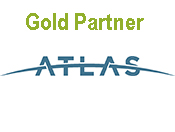On May 30, 2023, the LSPA submitted comments to USEPA via the Federal eRulemaking Portal regarding the proposed National Primary Drinking Water Regulation (NPDWR) for PFAS, under Docket ID: EPA-HQ-OW-2022-0114. Read the LSPA comment letter here. This was the first time in over a decade that the LSPA has commented on a proposed USEPA rule.
This USEPA webpage provides a summary of the proposed rule, along with links to supporting materials, technical materials, and background information. A small group of LSPA members including toxicologists, public health risk assessors, and LSPs with decades of experience reviewed and provided comments on this rule. The LSPA comments were organized according to the topics outlined in the slides from this USEPA presentation, Proposed PFAS National Primary Drinking Water Regulation (epa.gov).
Some of the key points of the LSPA’s letter are listed below.
- Noting that it appeared unlikely that USEPA would extend the comment deadline beyond May 30th, the LSPA encouraged USEPA to solicit public comment once again on a subsequent revised version of the NPDWR before the rules are finalized.
- The LSPA urged USEPA to not focus exclusively on setting very stringent MCLs for these constituents. While the LSPA absolutely believes that public health should be protected by safe drinking water supplies, promulgating extremely low MCLs, at concentrations that are barely detectable by a laboratory, without significantly limiting their use in commercial products is a fruitless effort because there will continue to be more PFAS introduced into the environment. Limiting the sources of these compounds in products will likely have significantly more of a public health impact as exemplified by the reduction in average PFOS (85%) and PFOA (70%) concentrations in blood levels following the phase out of these PFAS compounds.
- As an alternative to the proposed MCLs, the LSPA urged USEPA to consider adopting the standard of 10.0 ppt (Option 1c) to more closely balance costs and benefits.
- In our opinion, there is no technical justification for including PFBS in the Hazard Index Approach; the LSPA urged USEPA to consider setting an individual MCL for PFBS.
- The LSPA urged USEPA to consider using a summed concentration approach for PFNA, GenX, and PFHxS similar to that which MassDEP has employed for six PFAS compounds of similar toxicity.
- The LSPA noted that the resource capacity, supply chain availability of GAC and other treatment supplies, and laboratory capacity for undertaking compliance to these low MCLs has been greatly overestimated by USEPA.
- The LSPA believes that USEPA is overestimating the ability of the Bipartisan Infrastructure Law (BIL) to fund the significant, ongoing costs of implementing this proposed rule.
Because of the multiple background documents involved and the fact that the justification for the proposed rule is so complex, the LSPA referenced comments from the Massachusetts Water Works Association in our submittal. Since then, we have also noted comments on the USEPA website submitted by MassDEP.
USEPA has written that they anticipate finalizing the regulation by the end of 2023. The LSPA will keep our membership apprised of developments as they occur.

Charles P. Young, LSP
LSPA President

































